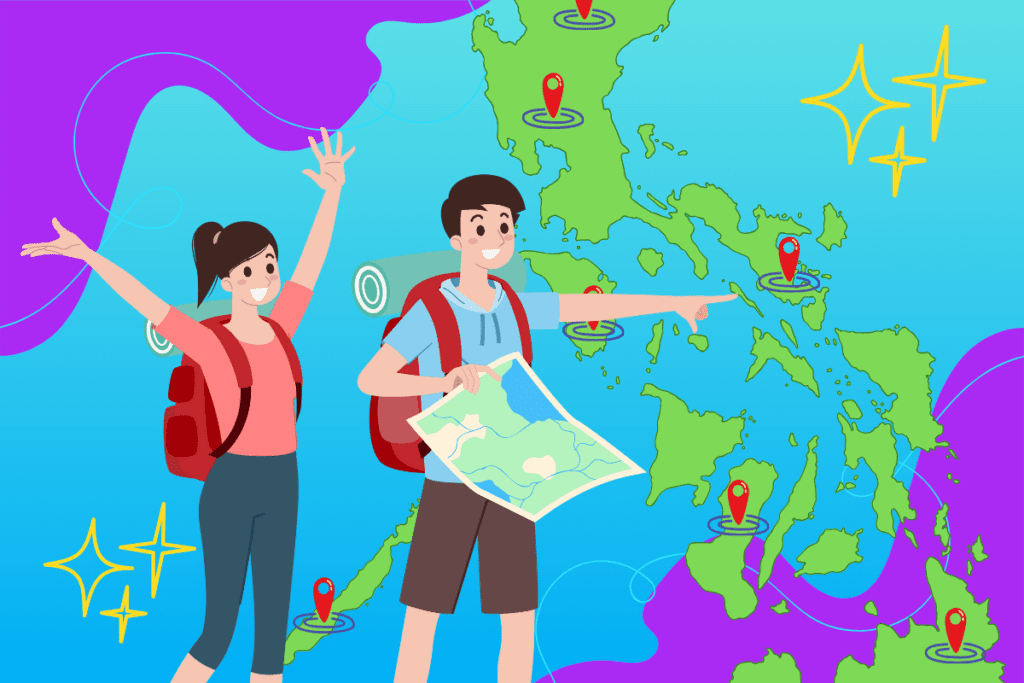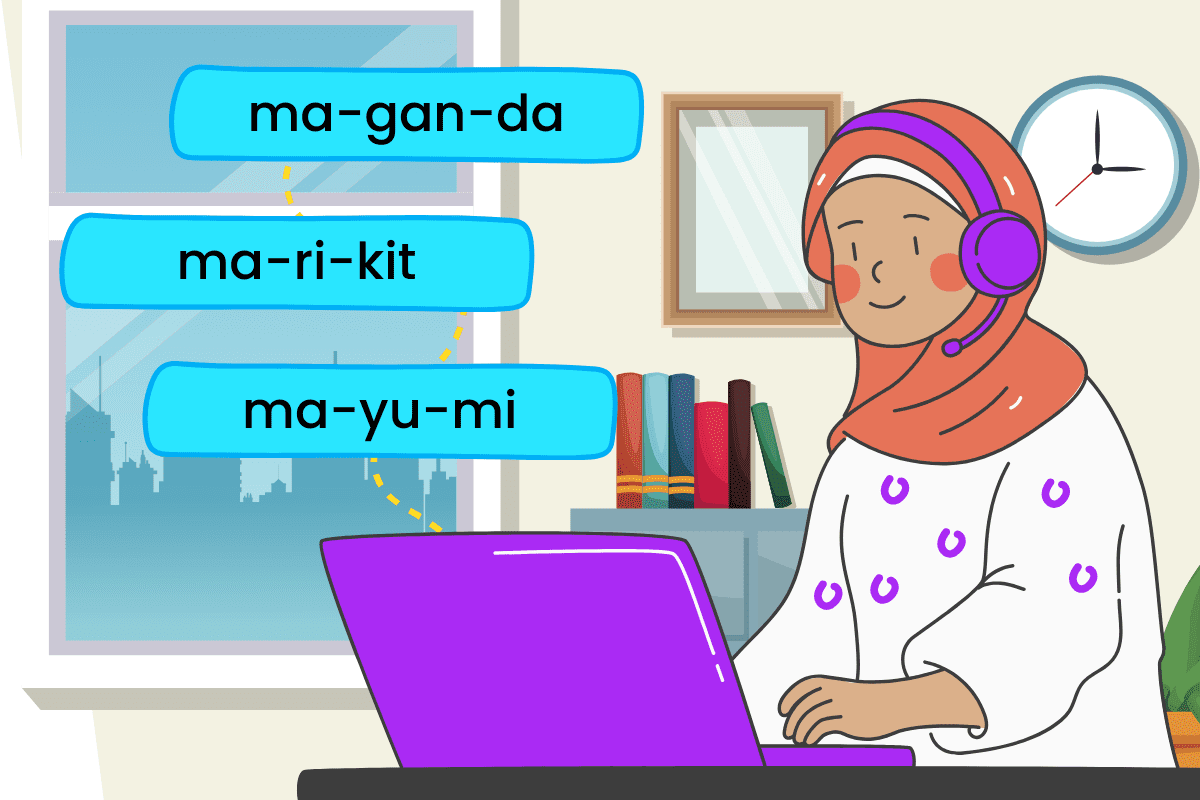The Philippines is rich with vibrant culture, stunning landscapes, and warm people, attracting tourists from all over the world. While English is typically enough to navigate, knowing a few essential Tagalog phrases can go a long way in enhancing your travel experience. First, let’s take a look at the key phrases to learn when visiting the Philippines.
Essential Phrases For Tourists
As established, knowing English can be enough when traveling to the Philippines. However, taking the time to learn even a few basic Tagalog phrases can make a huge difference. Not only does it make navigating through local markets, transportation, and restaurants more convenient, but it also gives you a deeper connection to the culture and the people around you.
Here are some of the common and essential phrases for tourists when traveling to the Philippines:

1. Greetings
- Of course, the first thing you need to know when traveling is greetings. Greetings are an ingrained part of our speech and are a great way to set a tone.
Magandang araw – Good day
- This is a neutral greeting that can be said at any time of the day.
Magandang umaga – Good morning
- This is a greeting said during the early morning.
Magandang tanghali
- This is a greeting said around late morning, lunchtime, or noontime.
Magandang hapon – Good afternoon
- This is a greeting said during the afternoon.
Magandang gabi – Good evening/night
- This is a greeting said during the evening or night.
Kumusta ka? – How are you?
- This is a more familiar greeting. You can also just say “Kumusta?”.
Ako si… – I am…
- This is the informal way of introducing yourself.
Ang pangalan ko ay… – My name is…
- This is the formal way of introducing yourself.
Paalam – Goodbye
- If saying goodbye to more than two people, you can also say “Paalam sa inyong lahat”.
Salamat – Thank you
- To make it even more polite, you can add po at the end.
Walang anuman – You’re welcome
- This is the response.

2. Basic Conversation
- It’s hardly expected for you to learn how to construct lengthy sentences in Tagalog for a quick vacation (unless you’re that dedicated). But, learning these simple phrases will help you engage in simple conversations and ask for help when needed.
Oo – Yes
- For a more polite tone, use opo.
Hindi – No
- For a more polite tone, use hindi po.
Pasensya na – Sorry / Excuse me
- For a more polite tone, say “Pasensiya na po.”
Pakiusap – Please
- Pakiusap is not used by itself. It is added at the beginning of a sentence.
Magkano ito? – How much is this?
- For a more polite tone, say “Magkano po ito?”
Ilan? – How many?
- For a more polite tone, say “Ilan po?”
Masarap – Delicious
- It is always good to show your appreciation for the food. A simple “Masarap” directed to the cook or the server after eating something is appreciated (especially if it’s from a hole-in-the-wall establishment or a simple stall).
Saklolo!/Tulong! – Help!
- Shout either of these when you need urgent help.
Magnanakaw! – Thief!
- Unfortunately, the Philippines is not safe from crime such as theft. Shout this one to bring attention to a thief.
May sunog! – There’s a fire!
- Shout this one if you encounter a fire that’s out of control.

3. Navigation
- When traveling, learning about basic navigation terms is always a must. This way you’ll be less likely to get lost or if you do get lost, you’ll be able to ask for directions.
Para po – This is my stop
- When riding a jeepney, taxi, or bus, say “Para po” for the driver to stop the vehicle. In the case of jeepneys and buses, you’ll need to say it in a clear and loud voice to be heard from the front.
- Some of the other ways to ask for the driver to stop while on a jeepney are to knock on the ceiling or clink your ring or a coin on the handrail above.
Saan ang CR? – Where is the restroom?
- CR or Comfort Room is the common term used in the Philippines for the restroom. For a more polite tone, say “Saan po ang CR?”
Pwede bang magtanong? – May I ask a question?
- This can be shortened to “Pwedeng magtanong?” The more polite form is “Pwede pong magtanong?”
Dadaan po ba ito sa… – Will this (jeepney) pass through…
- Ask this to the jeepney driver or bus driver or conductor to confirm whether it’s going to pass through the place you want to go.
- You may also want to ask this to a taxi driver just in case it’s not part of their usual route. Simply modify the question to “Pwede po ba sa…” (“Can you go to…”)
Magkano ang pamasahe? – How much is the fare?
- Ask this to a fellow jeepney or bus passenger if you’re not sure how much the fare is for your destination. The more polite form is “Magkano po ang pamasahe?”
Pakibaba po ako sa… – Please drop me off at…
- Say this to the taxi driver when you want to specify where you’re going.
Kanan – Right
- You’ll mostly encounter this word when asking for directions (or when a jeepney dispatcher is instructing you which side of the jeepney still has space to sit on).
Kaliwa – Left
- You’ll mostly encounter this word when asking for directions (or when a jeepney dispatcher is instructing you which side of the jeepney still has space to sit on).
Taas – Up
- You’ll mostly encounter this word when asking for directions.
Baba – Down
- You’ll mostly encounter this word when asking for directions.
- Emphasize the last syllable, otherwise, it will mean “chin”.
Tips For Travelers Learning Tagalog

1. Practice Pronunciation
- Tagalog pronunciation can be tricky for first-time learners, so it helps to listen closely to native speakers. One tip is to download a language-learning app, like Turong Wika, which offers replayable audio to help you master pronunciation and conversational phrases.

2. Politeness Is Key
- Politeness is a valued trait among Filipinos. Simply adding po or opo to your sentences shows respect, especially when speaking to elders.

3. Explore Other Resources
- You don’t have to pay for a class to learn Tagalog. There are several other resources that can help you with that which are cheaper or even free.
- One way is to Immerse yourself in the local culture by watching Filipino TV shows, listening to Tagalog music, or reading signs and menus in Tagalog. The more exposure you have, the easier it will be to absorb the language.
- Another is to play language games like crossword puzzles or flashcards, which can make learning Tagalog both educational and entertaining. Plus, it’s a great way to expand your vocabulary.
- Lastly, there are language-learning apps like Turong Wika which can help you before and during your trip. It’s like having a Tagalog tutor in your pocket.
Learning The Ropes
Learning a few essential phrases for tourists can make your travel experience in the Philippines more enjoyable and enriching. It shows respect for the local culture and helps you connect with the people you meet.
This effort doesn’t go unnoticed—Filipinos are known for their hospitality, and locals genuinely appreciate it when tourists attempt to speak their language. It can lead to warmer interactions, better service, and even open doors to new experiences that you might not encounter as an English-only speaker.
If you’re looking for a language app to practice on the go, Turong Wika can be a great companion to improve your Tagalog conversational skills.
Turong Wika has interactive lessons, which are perfect for memory retention. Also aiding you in your learning endeavor are the Cheat Sheet and Practice features.
Immerse yourself in the rich Filipino experience. Scan the code below to download the app now!
Immerse yourself in the rich Filipino experience. Click on the button below to download the app now!






